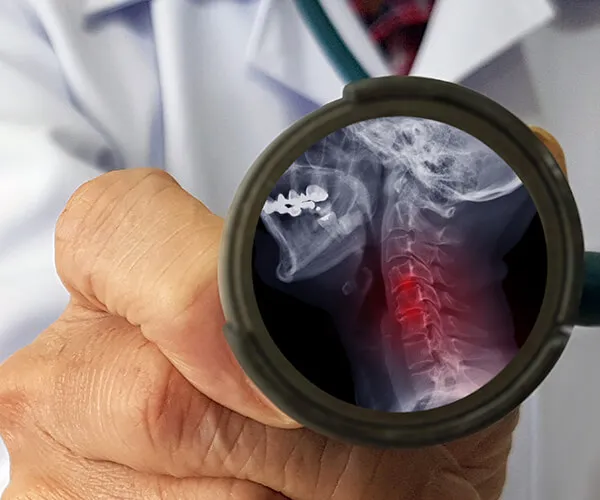

Now offering Primary Care services under Apex Primary Wellness! Schedule your visit today.
Cervical radiculopathy or pinched nerve occurs when nerve roots in the cervical spine or neck region become compressed or inflamed. This condition leads to neurological issues such as radiating pain, muscle weakness, and numbness.
Individuals may experience symptoms such as pain, weakness, numbness, or tingling that radiates from the neck down to the shoulder, arm, or hand. The severity of symptoms can vary depending on the extent of nerve involvement.
With the effective treatment for pinched nerves in the neck in Coppell, Carrollton, Grapevine, TX, and surrounding areas, you can experience lasting relief from pain and lead a better life.

Individuals experiencing cervical radiculopathy often describe the discomfort as sharp or burning, and it may worsen with specific neck movements, such as extension or straining.
However, some individuals find temporary relief by placing their hands on their heads, which can alleviate pressure on the affected nerve root. The symptoms can vary in intensity and duration depending on the underlying cause and individual factors.
A pinched nerve is primarily caused by compression or irritation of spinal nerve roots. This compression can result from various factors, such as:
Finding the root of your radiculopathy is key! Effective treatment starts by addressing the cause of your pain.
Risk factors for cervical radiculopathy include:
Degenerative changes in the spine are more common with aging.
Jobs involving repetitive neck motions or heavy lifting increase the risk.
Prolonged sitting can strain the neck, especially with poor posture.
Trauma or injury to the neck can predispose individuals to radiculopathy.
Nicotine can affect blood flow to the spine, contributing to degeneration.
Some individuals may inherit conditions that predispose them to spinal problems.
Excess weight can strain the spine, exacerbating degenerative changes and nerve compression.
Cervical radiculopathy diagnosis involves various steps and tests, such as:
Cervical radiculopathy treatment depends on the severity and symptoms but generally includes:

At Apex Interventional Pain & Spine, our focus lies in diagnosing and treating cervical radiculopathy or pinched nerves using customized advanced methods. Our expert team is dedicated to delivering thorough care that targets both symptoms and root causes of your discomfort. If you're grappling with pain in the cervical and neck region, we're here to assist you in reclaiming control over your life.
Reach out today to schedule your consultation and initiate on the path toward a life free from pain with our support.
Are you searching for an effective treatment for pinched nerves in the neck in Coppell, Carrollton, Grapevine, TX, and surrounding areas? Schedule your consultation now and discover personalized solutions for lasting relief.